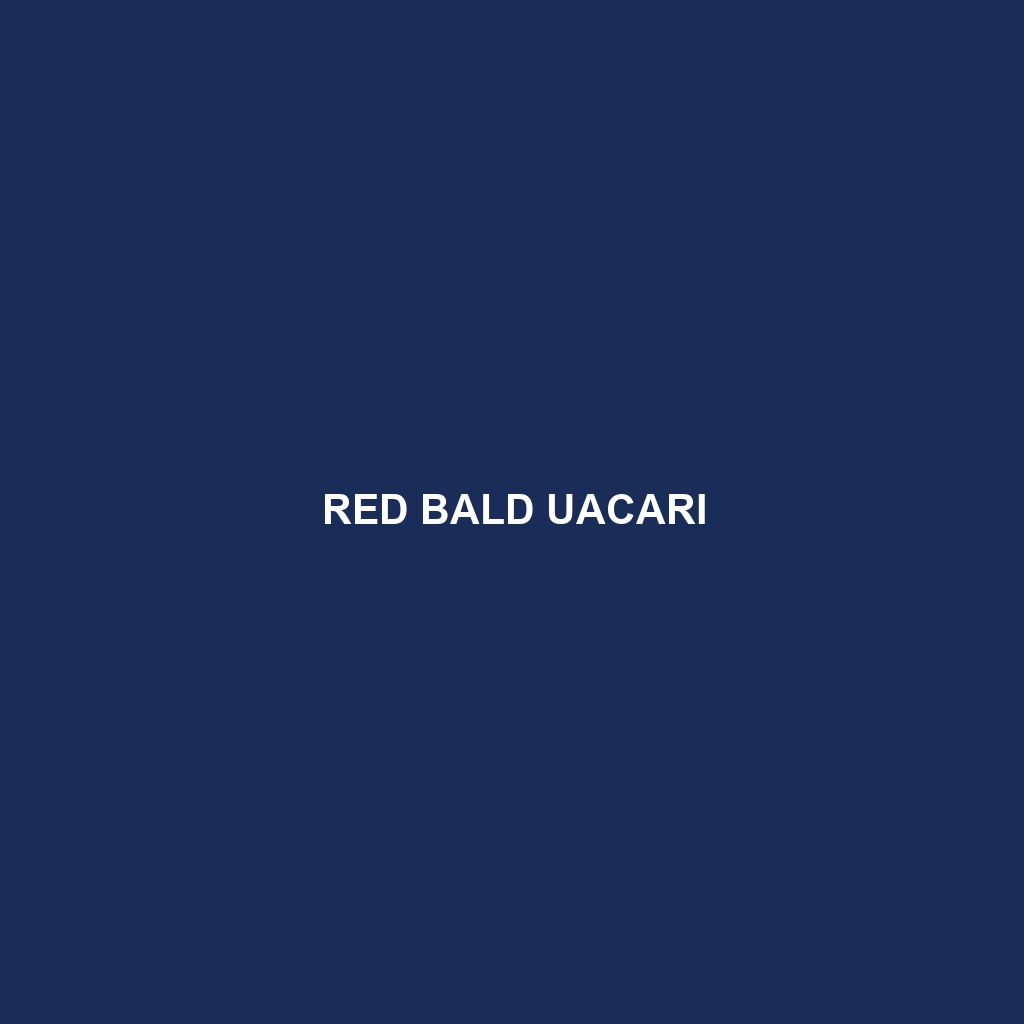Red Bald Uacari – Species Description
Common Name: Red Bald Uacari
Scientific Name: Cacajao amuna
Habitat
The Red Bald Uacari is primarily found in the dense, flooded forests of the Amazon Basin, particularly in Brazil, Peru, and Colombia. These monkeys inhabit regions with abundant water bodies, such as rivers and swamps, where they thrive in the swampy tropical rainforest environment. They are often seen in the igapó, a type of flooded forest that experiences seasonal inundation.
Physical Characteristics
Red Bald Uacaris are medium-sized primates, averaging between 45 to 55 centimeters in length. The most distinctive characteristic is their striking red fur on the body, complemented by a bald head, which makes them easily identifiable. They have large, expressive eyes and their facial features are mostly hairless, which adds to their unique appearance. Their prehensile tails are approximately the same length as their bodies, assisting them in navigating the forest canopy.
Behavior
Red Bald Uacaris are known for their social behavior, usually living in groups that can consist of up to 20 individuals. They are diurnal, meaning they are active during the day, and tend to be quite vocal, communicating through a series of calls and sounds. Their movements are predominantly arboreal, and they are agile jumpers, often moving swiftly through the treetops. These monkeys exhibit playful behaviors and are known to engage in grooming within their social groups.
Diet
This species primarily feeds on fruits, seeds, and nuts, making them frugivorous. They play a significant role in their habitat as seed dispersers, contributing to the regeneration of rainforest plant species. Additionally, Red Bald Uacaris may occasionally consume insects and small plant parts to supplement their diet.
Reproduction
Reproduction in Red Bald Uacaris typically occurs once a year, with a gestation period lasting about 5 months. Females usually give birth to a single offspring, which they care for closely during its early development. Notable maternal behaviors include carrying the young on their backs and nurturing them through close contact, ensuring protection and warmth.
Conservation Status
The Red Bald Uacari is currently classified as endangered due to habitat loss, hunting, and environmental changes. Deforestation in the Amazon and human encroachment into their habitat pose significant threats to their survival, prompting conservation efforts in various regions.
Interesting Facts
One fascinating aspect of the Red Bald Uacari is its adaptation to the ecological conditions of the flooded forests. Their baldness is thought to be an adaptation to the humid climate, reducing moisture retention and helping to prevent fungal infections. Furthermore, they are among the few primate species that have such distinctive coloration, which adds to their intrigue.
Role in Ecosystem
As important seed dispersers, Red Bald Uacaris contribute to maintaining the biodiversity of the Amazon rainforest. Their feeding habits promote the growth of various plant species, which supports overall ecosystem health. They interact with many other species within their habitat, making them a vital part of the ecological web.
